Results 1,351 to 1,360 of 12096
Thread: Anandtech News
-
01-05-12, 07:00 AM #1351
Anandtech: 5th Generation WiFi: 802.11ac, "Gigabit" WiFi Primer
Five years have passed since the first 802.11n devices implementing a draft of the now-finalized specification hit the market. Over the years 802.11n support has become ubiquitous in the industry. Everything from smartphones to high-end notebooks support the standard. Even low cost products like the $99 Apple TV or $49 Roku LT ship with 802.11n support. With real world transfer speeds ranging from 30Mbps at the low end to 150Mbps at the high end, 802.11n is simply too slow to quickly move large files. It wasn't too long ago that 100MB/s was reserved for high-end hard drives in PCs. Today, with SSDs capable of sustaining transfers of over 500MB/s, the bottleneck in many wireless homes is increasingly becoming WiFi.
The IEEE has been working on the specification for the fifth generation of WiFi: 802.11ac. Today that spec is in its draft stages and is expected to be finalized by the end of 2012 or beginning of 2013. The first 802.11ac chipsets have already been announced by Broadcom, with the first devices (routers, USB dongles, PCIe cards and OEM systems) shipping very shortly. Broadcom expects that the final version of the 802.11ac spec will be only marginally different from the current draft and any changes it expects to be able to address in software.
If you're wondering where the 'ac' suffix comes from, the IEEE simply ran out of single letters. Every technical paper released by the IEEE for the 802.11 project is assigned a letter. The vast majority of these papers aren't broad, networking standards which is why you never hear about them. The ones that end up as standards gain popularity but the nomenclature is purely linear use of the alphabet.
Note that 802.11ac is not the same as WiGig (802.11ad), which is a 60GHz interface with very short range. WiGig is more of an in-room technology while 802.11ac is a true WiFi successor.
5GHz Only, 256QAM
Although 802.11n can operate in either 2.4GHz or 5GHz modes, 802.11ac is exclusively a 5GHz interface. While there are building propagation tradeoffs made at higher frequencies, the benefit of being 5GHz-only is a significant reduction in interference. While the 2.4GHz spectrum is littered with interference from other devices, there's much less crowding at 5GHz where there's much more available spectrum. If you've ever been in an densely populated environment and tried to tether your notebook to your smartphone over 2.4GHz WiFi (anywhere in Manhattan) you'll appreciate 802.11ac's 5GHz exclusivity.
Each 802.11ac channel is wider than any previous WiFi standard at 80MHz with optional support for 160MHz (40MHz is the widest you can get on 802.11n, although 20MHz is still not uncommon).
Spectral efficiency is also improved on 802.11ac compared to 802.11n. While the latter used a maximum of 64QAM, ac supports 256QAM. Brian provided a great explanation of QAM encoding here.
802.11ac 3x3: Up to 1.3Gbps, Wirelessly
The 4x increase in data encoded on a carrier coupled with a doubling of channel bandwidth are together responsible for the increase in bandwidth per stream in 802.11ac. The maximum bandwidth per spatial stream in 802.11n was 150Mbps (40MHz channels, short guard interval), while in 802.11ac that value jumps to 433Mbps.
Smartphones and tablets will still likely use a 1x1:1 configuration (1 transmit, 1 receive antenna with 1 spatial stream), however high-end notebooks will likely use 3x3:3 configurations similar to what they have today with 802.11n. In these cases you're looking at a peak theoretical bandwidth of 1.3Gbps. Even with smartphones/tablets implementing 1x1:1 802.11ac (433Mbps), there's a huge improvement over the 72Mbps PHY rate on the best of the best today.
As we've seen with 802.11n, real world transfer rates are often 1/3 - 1/2 of the negotiated interface rate. Even if that continues to be the case, we're still looking at a tangible increase in bandwidth over 802.11n.
There is a chance we'll see even better efficiency out of 802.11ac however. Although closed loop beam forming was a supported feature in the 802.11n spec, it wasn't widely used. In 802.11ac, we'll see closed loop beam forming from many high-end, multi-antenna access points. Combined with information from client devices, 802.11ac APs will be able to adjust the phase of output signals to increase received signal strength on the client without increase output power on the AP.
802.11ac also supports more spatial streams (8) than 802.11n although the first solutions will still use a maximum of three.
Power Consumption
Given an infinitely sized data set, 802.11ac will draw more power than 802.11n. The specification is simply more complex and supporting things like wider channels requires more power. Thankfully, data sets are not infinitely sized. And for the near term, files and web pages sizes shouldn't increase tremendously. Although 802.11ac chipsets built on the same process as their n counterparts will draw more active power, their higher performance should allow the WiFi stack to go to sleep sooner. Idle power in a well designed 802.11ac solution should be comparable to 802.11n, and a race to sleep generally results in improved average power.
When faced with the prospects of significant improvements in download speeds, users tend to do more with their devices. If you're transacting more data over 802.11ac than you did via 802.11n, you can expect to see greater power consumption. If you're doing the same workload, it's possible that you'll see the same or better power consumption on 802.11ac compared to n thanks to the chipset being able to go to sleep quicker. All of this depends on the scenario, something we'll obviously test once we have the first ac devices in house.
The first 802.11ac chipsets will be built on 40/45nm processes, similar to the most recent 802.11n chipsets. The inevitable move to 28/32nm will further reduce power to help offset any changes in usage models over time, although I wouldn't expect that transition to happen for a little while given the cost of 28nm wafers today.
Backwards Compatibility
Similar to current 802.11n devices, ac chipsets will support fallback to older 802.11 standards depending on available networks and speeds. Chipsets are expected to prefer 5GHz ac by default, but then fall back to 802.11n speeds when appropriate. Most chipsets will likely be dual-band, so in the event that 5GHz isn't sustainable (or available) they will fall back to 2.4GHz 802.11n, then g and b.
Final Words
We're still a couple of years away from widespread adoption of 802.11ac, but the first products will be arriving shortly (many will likely debut at CES next week). We often write about advancements in CPU, GPU and SoC technologies, but it's important to see progress in network interfaces as well. Balanced systems are important and 802.11ac should help usher in the next-generation of usage models.
We'll enjoy the benefits of less interference as 802.11ac is a 5GHz-only standard as well as much higher performance thanks to wider channels and 256QAM encoding. Transmit power efficiency should also go up if we get wireless APs with sophisticated beam forming support. All of this will work together to deliver many times the performance we currently get over 802.11n without significant downsides.
WiFi has proven to be extremely important in the mobile revolution that has taken place over the past 10 years. While we'll undoubtedly see even faster wired interfaces (10GbE on the desktop anyone?), 802.11ac will be a significant part of the next phase of mobile evolution.
More...
-
01-05-12, 07:10 AM #1352
Anandtech: Google TV Goes ARM with Marvell's ARMADA 1500
It wouldn't be far off the mark to call Google TV as one of the unmitigated disasters of 2010 - 2011. Through the failure of the Logitech Revue, it was responsible for Logitech's below-par performance last year, and also for the stepping down of its CEO. Anand covered Intel's winding down of the Digital Home Group and it could be said that Google TV / Intel's concept of Smart TV not taking off as expected was one of the reasons.
However, Google doesn't give up on its efforts without a fight. With access to the Android market and an upgrade to Honeycomb, Google TV received some life support last October. However, pricing and device power consumption were the two other prime factors which needed to get addressed. In order to take care of these factors, it was inevitable that Google and its partners would end up moving to an ARM based platform. Given that ARM has remained the architecture of choice for Android smartphones, this was also a move predicted by many.
We covered Marvell's foray into the DMA (Digital Media Adapter) market with their ARMADA 1000 platform. Today, Marvell is officially launching the next generation ARMADA 1500 (88DE3010) SoC. They also announced their team up with Google and indicated that all the Google TV boxes at the 2012 CES would be powered by Marvell silicon. Read on for our analysis.
More...
-
01-05-12, 08:50 AM #1353
Anandtech: Acer Iconia Tab A200 On Sale January 15 Priced At $329
Acer has formally announced the US pricing and launch date details for the Iconia A200, the follow up to the Iconia A500 tablet it launched mid-last year. The A200 specsheet reads pretty similar to the A500, with a 10" 1280x800 display, Honeycomb 3.2, Nvidia's tried-and-true Tegra 2 computing platform, 1GB of memory, microSD expandable storage, a full size USB port, and your choice of 8GB ($329) or 16GB ($349) internal NAND.
Some of the bigger changes include the deletion of the rear facing camera (a 2MP front facing webcam remains), but by far the biggest difference is the change in industrial design. The A200 has a much cleaner and more elegant design than the A500, with a smooth, rounded backplate done in a titanium gray soft-touch plastic (there's also a metallic red model available elsewhere in the world, though the Acer US press release makes no mention of its availability on this side of the pond).
The overall look is more conventional and conservative than the A500, but it looks like it should have better build quality (our biggest peeve with the A500 being the ill-fitting plastic and metal pieces that made up the chassis) due to the single plastic part making up the body of the device. Also, the rounded edges and corners should make it more comfortable to handle than the previous Iconia.
The A200 will hit stores on January 15 with Honeycomb 3.2 installed; an upgrade to Ice Cream Sandwich (4.0) is promised in the mid-February timeframe. With its budget-oriented price and relative lack of features, the A200 is clearly aimed at the entry-level 10" tablet market. For performance users, Acer is expected to debut a high end Iconia Android tablet at CES next week, so stay tuned.
More...
-
01-05-12, 01:50 PM #1354
Anandtech: Nook Tablet Beats Expectations, B&N Considers Nook Spin-off
Barnes & Noble announced via a press release today that sales of its Nook lineup, including the new Nook Tablet, the older Nook Color, and the Nook Simple Touch E-Ink e-reader, were up 70 percent over last year due in part to strong performance by the Nook Tablet. Sales of the Nook Simple Touch were lower than expected, however, which Barnes & Noble attributes to a "customer preference for color devices."
Because of this generally strong performance, the company is considering spinning the Nook unit off into a separate business. If it happens, Barnes & Noble cautions that such a move would only come after an evaluation process of indeterminate length. Whether it's separated or not, B&N expects its Nook business to continue growing year-over-year both in the United States and abroad. While all of these sales numbers look good for Barnes & Noble, neither they nor Amazon (nor other e-reader outfits, like Canadian company Kobo) release hard sales figures for any of their devices, making it difficult to see how their sales stack up to one another.
The Nook Tablet, which includes a 1GHz dual-core TI OMAP 4430 SoC and 1GB of RAM, sells for $249 and competes primarily with Amazon's Kindle Fire and other inexpensive 7" Android-powered tablets.
Source: Barnes & Noble
More...
-
01-05-12, 04:40 PM #1355
Anandtech: Western Digital My Book Live Duo: RAIDing the My Book Live
We had reviewed the Western Digital My Book Live in detail last October and came away impressed with the functionality and mobile app support in place for the cost. One of our chief complaints about the network attached unit was the absence of any sort of in-built backup measure to protect against a crashed hard drive. It was all the more puzzling, given the fact that the Applied Micro APM82181 NAS platform was more than capable of the usual NAS functions.
Today, Western Digital is expanding its My Book Live lineup with the introduction of the My Book Live Duo. Building on the industrial design of the My Book Live, the new unit accommodates two hard drives, and is capable of running them in either RAID-0 (higher capacity) or RAID-1 (mirrored for backup / availability). All the WD apps (WD2go on various platforms including the PC) for the My Book Live are available for the Duo version also.
Western Digital confirmed that the Duo runs on the same platform as the My Book Live, i.e, a Debian Lenny build for the Applied Micro APM82181 PowerPC platform. The well-reviewed web interface and controls are retained. They also indicated that RAID-1 rebuild capability is available (so, if one of the drives fails, you can replace it with another drive and get RAID-1 protection back in place). The original My Book Live wasn't teardown friendly. Hopefully, the Duo version is better.
Despite what Western Digital says with respect to RAID-1 (double-safe backup), I am sure readers understand that a RAID system is not a backup scheme, but just ensures data availability. That said, it is a good first level protection to have.
Coming in 4TB and 6TB variants (priced at $399.99 and $499.99), the units appear a bit costly (more than double the cost of the equivalent My Book Live unit). Hopefully, as hard drive prices go down in the next few months, the prices will come down.
More...
-
01-05-12, 04:50 PM #1356
Anandtech: Sprint Ad Announces Galaxy Nexus with 1.5 GHz SoC
Sprint seems to be busy with its announcements today, and the latest comes in the form of an unassuming-looking advert on Cnet. Ordinarily, a US carrier announcing yet another carrier-specific version of the same device isn't big news, but what's interesting about the Sprint Galaxy Nexus is that it notes the inclusion of a 1.5 GHz SoC.
Both the GSM/WCDMA Galaxy Nexus (yajku) and the CDMA/LTE Galaxy Nexus (mysid) are currently based on a TI OMAP4460 SoC with a CPU clock of 1.2 GHz. Of course, OMAP4460's adveritsed maximum clock has always been 1.5 GHz. No doubt, Sprint has chosen to opt for the maximum OMAP4460 clocks for its very own Galaxy Nexus variant, which will also include CDMA and LTE. It will be interesting to see what the Sprint variant pegs its SGX 540 clock at as well, considering how (best I can tell) the current Galaxy Nexus variants put it at 307 MHz, and not the 384 MHz advertised maximum or OMAP4460. We'll be paying attention to the Sprint variant and update if anything else emerges. Source: Cnet
More...
-
01-05-12, 07:20 PM #1357
Anandtech: LG Premiering Google TV Powered Televisions At CES

Our inboxes are filled to the brim with releases of all types; most hit the round file and never end up on the site, some are a bit more compelling. This one goes in the latter category, though the news will only sound good to some of you. LG will be introducing a 3D set that combines their own Smart TV platform with Google TV. The set will be previewed at the LG press conference on Monday, for now we have the linked PR below and a few glamour shots.
It is likely that the TV will feature the latest Google TV hardware we heard about earlier today. If the press shots are at all indicative, the Google TV platform may soon be customizable in the same fashion as Android on mobile phones is today. LG's Smart TV with Google TV appears to feature an entirely different interface than we've seen on prior Google TV hardware, looking like an amalgam of LG's prior Smart TV interface and Google TV. Most notably is an interface that includes current content being played back in a panel alongside the interface. Previously the interface was overlaid on content, and video coexisted alongside interface elements only within certain apps.
We'll see how this all shakes out Monday. Till then, we'll keep sifting through our inboxes.
More...
-
01-05-12, 08:20 PM #1358
Anandtech: Roku Streaming Stick Brings Smarts To MHL Equipped TVs

Smart TVs will be a big deal this year. If you sunk your money on one of last year's 3D sets, you probably don't want to do it again for a Smart TV. Not to worry, Roku has you covered. Introducing the Roku Streaming Stick, an over-the-top streaming solution squeezed into something the size of a USB drive. The device will bring the full Roku experience, including all 400 channels including Netflix, and Amazon Instant Videos; wirelessly and without any cables.
The device is powered and delivers content through the Mobile High Definition Link (MHL) standard. The HDCP-compliant standard was established in 2010 and provides up to 1080p video, 7.1 channels of 192 kbps digital audio over a 5-pin interface that also provides 500 mA of 5 volt power. The 5-pin interface can be configured into various connectors, and can currently be found in a handful of devices from Samsung, though the consortium that formed the standard includes the likes of Sony, Toshiba and Nokia. That half amp of power is enough to power the BCM2835 that can be found in the Roku 2 line-up, so this could really be a case of efficient packaging.
So, if Smart TVs will be big this year why not a Roku TV? Roku sees an issue with integrating the hardware platform directly into the television: upgrades. The hardware behind each successive generation of hardware streaming devices is a pretty big improvement over the last. So frequent platform changes drive thie software innovations we'll come to expect from a Smart TV market. Yet most consumers replace their TVs only every five years or so. Roku's solution is to provide a low cost, OTT, Smart TV platform that can be replaced when updated hardware is available. We'll be excited to see how well it performs in person at CES.
Gallery: Roku Streaming Stick Brings Smarts To MHL Equipped TVs

More...
-
01-05-12, 09:30 PM #1359
Anandtech: AT&T Flips the LTE Switch in 11 Markets, Sprint Announces its First 4 LTE
Today has been a busy day for wireless carriers in the USA, with both AT&T and Sprint making 4G LTE related announcements. AT&T today enabled LTE service in 11 more markets, bringing its total number of LTE-enabled markets at present to 26. New markets that AT&T LTE just lit up in are:
New York City metro area, Austin, Chapel Hill, Los Angeles, Oakland, Orlando, Phoenix, Raleigh, San Diego, San Francisco and San Jose.Anand fired up an HTC Vivid on AT&T LTE in the Raleigh market and saw 17 Mbps down on the largely unloaded network.
Meanwhile, Sprint announced its first four LTE markets which will light up in the first half of 2012: Atlanta, Dallas, Houston and San Antonio. Sprint also plans to launch up to 15 LTE-enabled devices in 2012, including handsets, tablets, and data cards. At the same time, Sprint will continue selling WiMAX enabled devices through 2012 and will keep its WiMAX network operational through at least 2015.
Source: AT&T, Sprint
More...
-
01-06-12, 08:12 AM #1360
Anandtech: OCZ & Marvell Create Native PCIe SSD Controller, Z-Drive R5 to Debut Next
Just a couple of months after launching its first SATA based SSD controller developed in-house, OCZ is announcing a PCIe based SSD controller co-developed with Marvell. The controller is based on Marvell's 88NV9145 silicon, codenamed Kilimanjaro, and is an OCZ exclusive as the two companies apparently worked together in creating it. I'll see the chip in person next week at Storage Visions (just before CES) but it should carry both OCZ and Marvell logos.
The controller itself features a native PCIe 2.0 x1 interface rather than SATA. That in itself isn't very impressive, but the first platform to use it will feature an array of these controllers behind a PCIe switch (and presumably some sort of RAID-like controller implmenting OCZ's VCA). The first implementation will be the OCZ Z-Drive R5 and will be available in MLC, eMLC and SLC NAND configurations of up to 12TB.
OCZ is claiming compatibility with VMware ESX/ESXi, Linux, Windows Server 2008 and OS X. Both full and half-height configurations will be available, similar to the Z-Drive R4.
I'm curious as to why OCZ and Marvell decided to design a native PCIe to NAND Flash controller but limited it to a x1 interface. Ideally we'd see something like a native x4, x8 or x16 controller, especially given how much bandwidth you can push through these large NAND arrays. I'll find out more next week for sure, but I wonder if the target market for this controller might be something beyond a multi-controller PCIe card.
More...
Thread Information
Users Browsing this Thread
There are currently 34 users browsing this thread. (0 members and 34 guests)




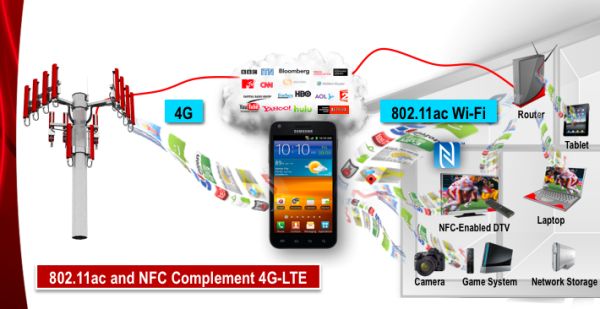
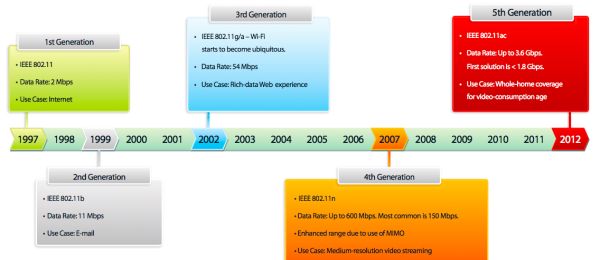


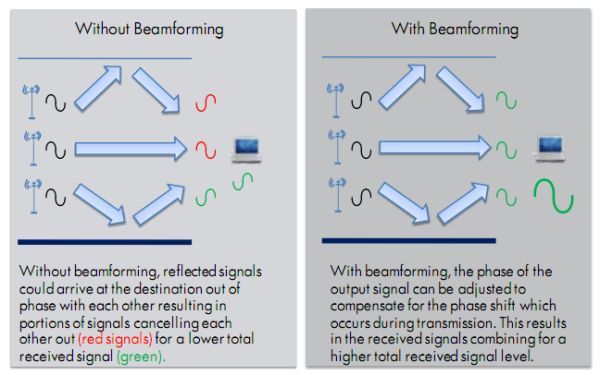

 Quote
Quote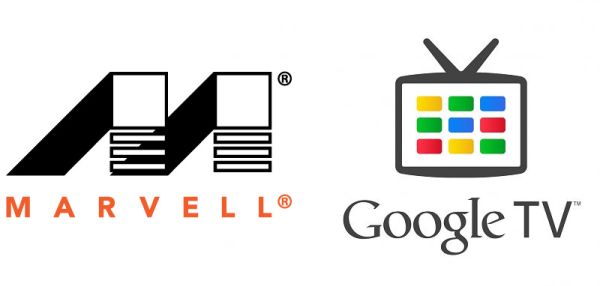
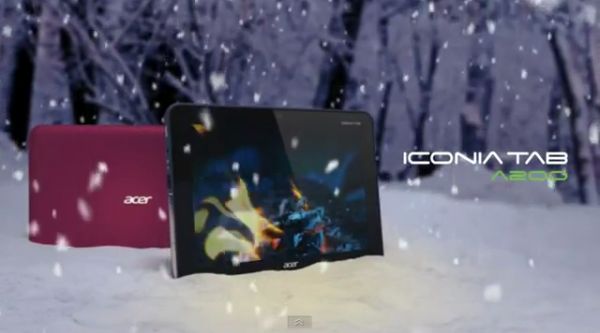
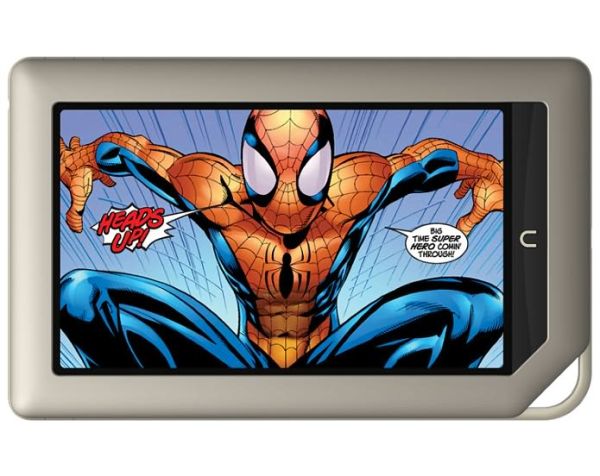

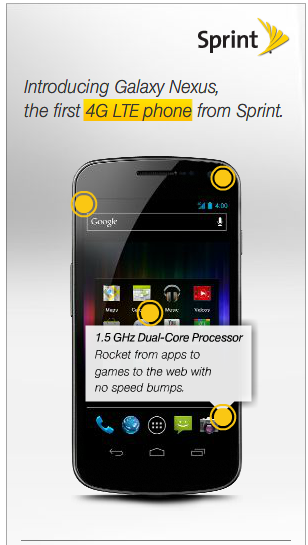
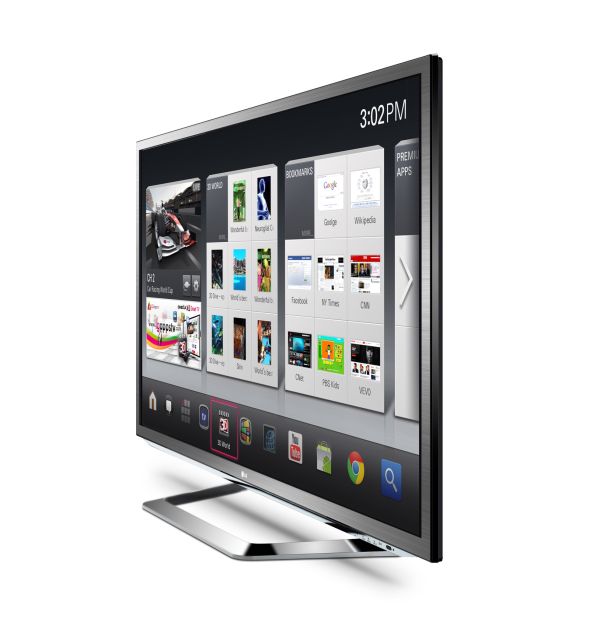


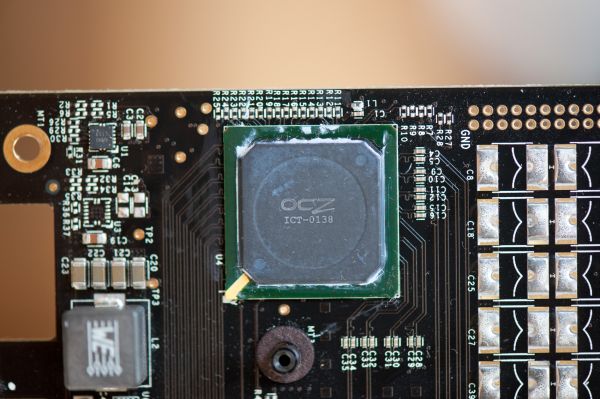
















Bookmarks